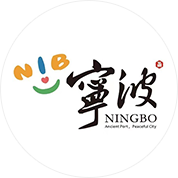Fortune Route Line 1
North Bank of Xitang River Urban Section: Wangjing Gate Ruins – Xitang River Cultural Park – Wangchun Bridge – Rising Yongji Bridge – Xinqiao – Gaoqiao
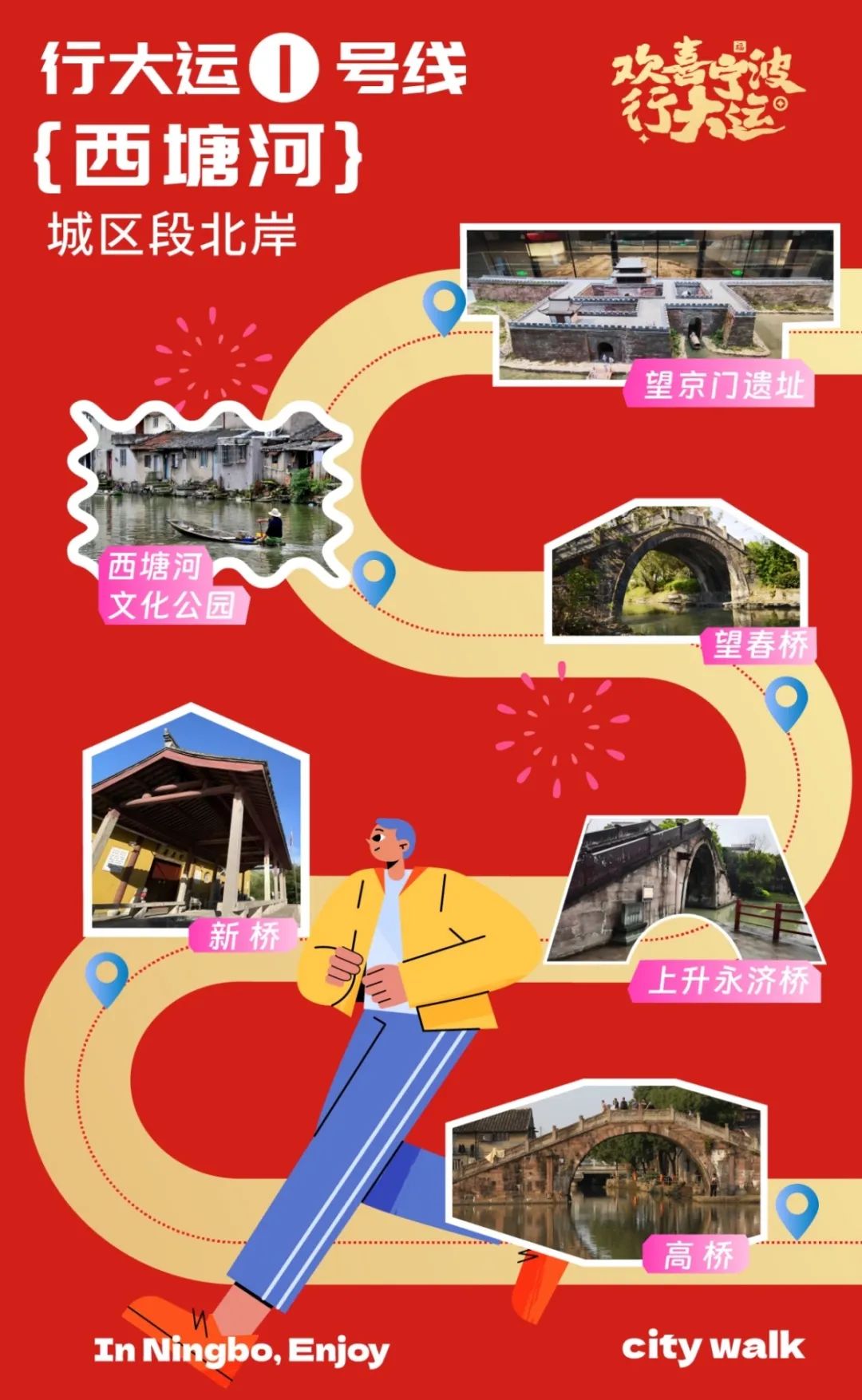
The Xitang River stretches about 12 kilometres, from Gaoqiao in the west to Ximen (West Gate) of Ningbo in the east.
According to historical records, in the 7th year of the Zhenghe reign in the Song Dynasty (1117), the Guangde Lake in Xixiang was drained, and the Xitang River was excavated.
As a crucial waterway to bypass the salt tides of the Yao River and access the ancient city of Ningbo, Xitang River was the final stretch of the canal entering the old city and the departure point for boats heading to Hangzhou, Beijing, and beyond. It forms a vital segment of both the Eastern Zhejiang Canal and the Grand Canal of China, serving as a key artery connecting rivers and seas.
Historically, the Xitang River was a major route for cultural and administrative exchanges between Ningbo and the outside world. The prosperity along its banks was documented in early Ming scholar Zhang Dezhong’s poem Ballad of the Two Capitals Waterway and in Pyohaerok by Choe Bu of Goryeo (Korea).
Fortune Route Line 2
North Bank of Yong River: Old Bund – Former Ningbo Customs House – Former British Consulate – Harbour Impression Hall – Cultural and Creative Port
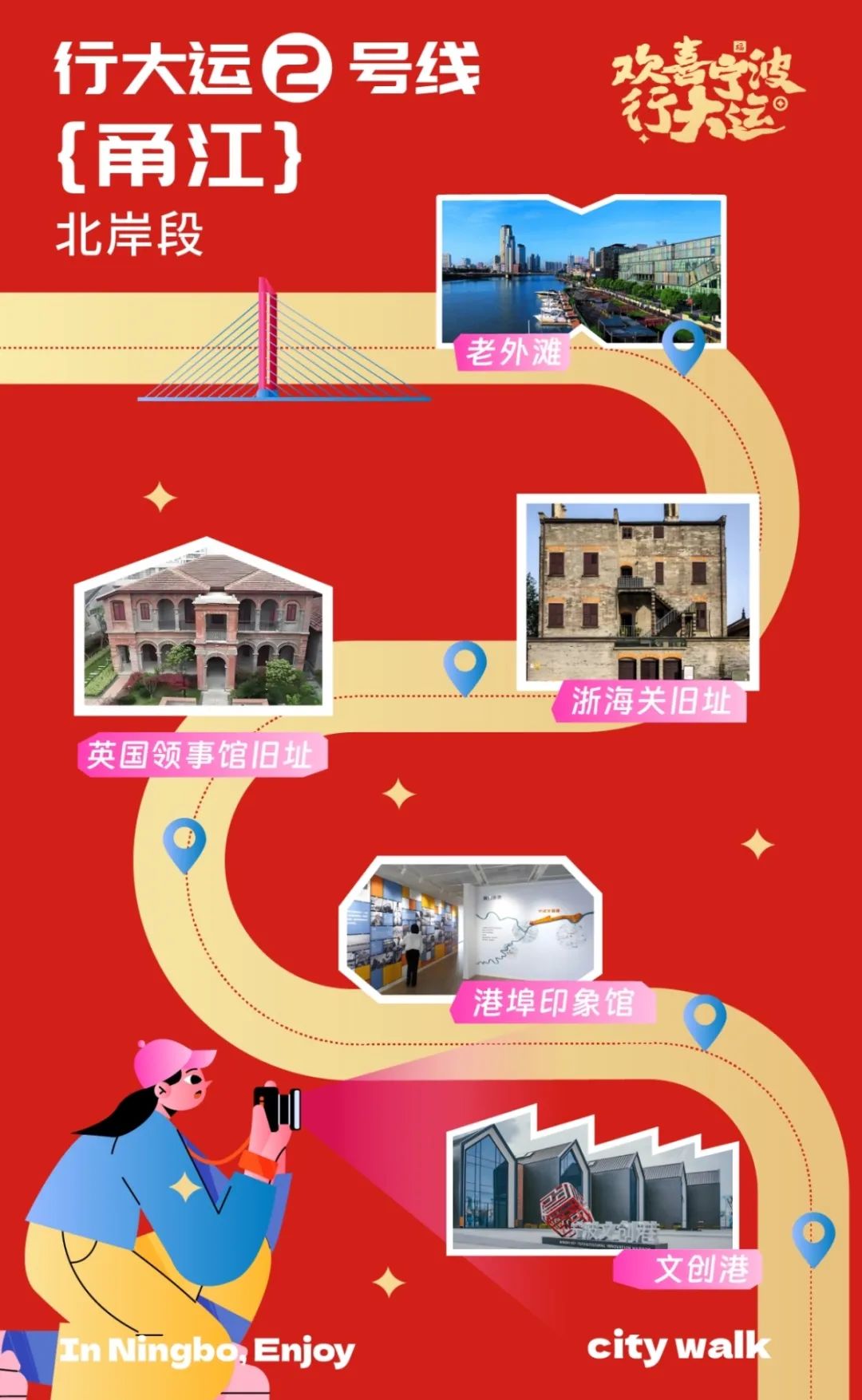
Fortune Route Line 3
South Bank of Yong River: Qing'an Guildhall – Ningbo Book City – Hefeng Cotton Mill – Fishing Trawler Factory – Former Ice Rink Area

Fortune Route Line 4
South Bank of Yao River: Departure Point of the Maritime Tea Route – Guildhall of the Money Trade – Ruins of Heyimen Wengcheng (Barbican Fortress) – Yongfeng Park – Yao River Sluice – Greenway Park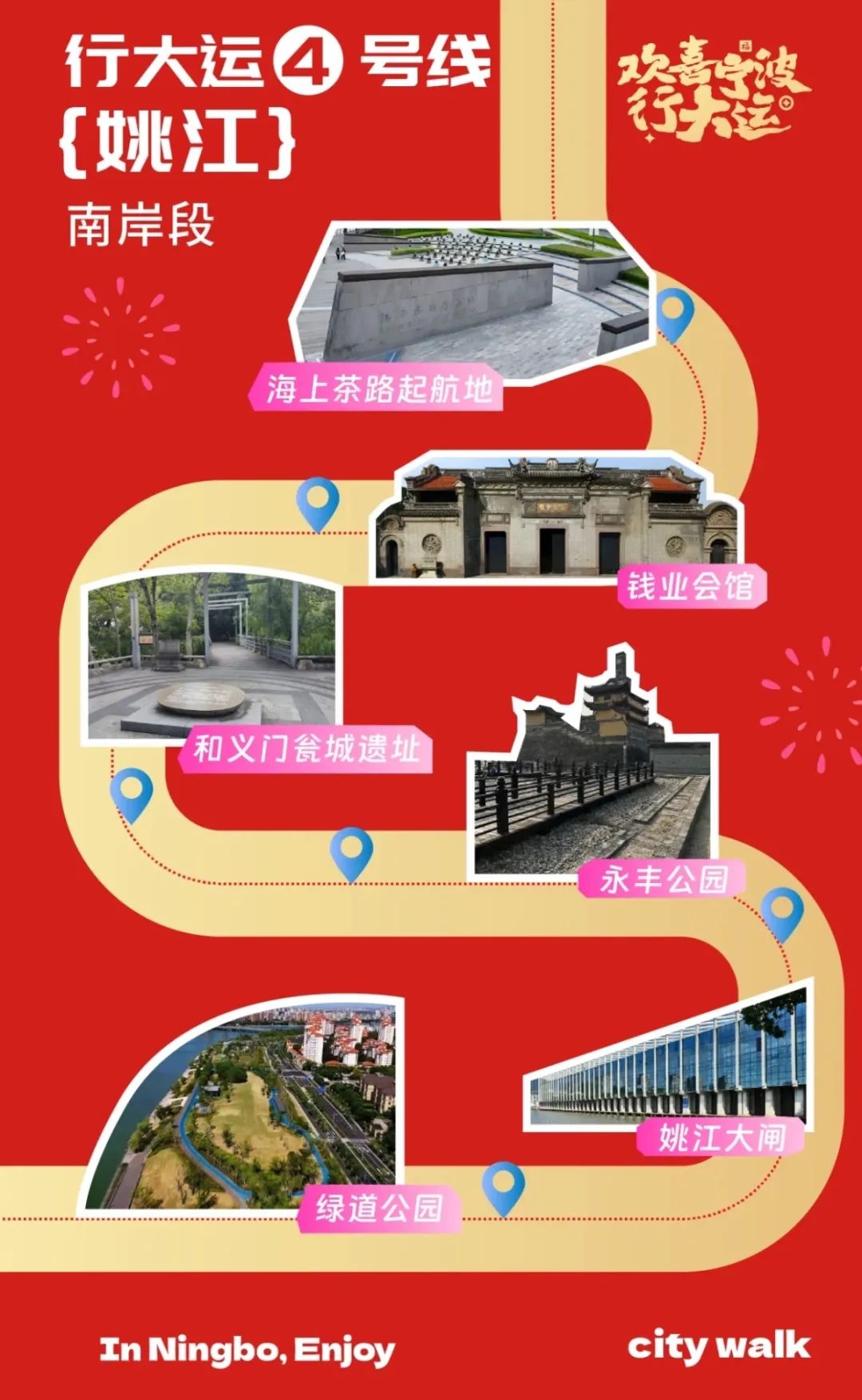
Fortune Route Line 5
North Bank of Yao River: Shuanggu Ferry Park – Qinglindu Ancient Ferry – Ningbo Riverside Sports Park – Qinglinwan Bridge
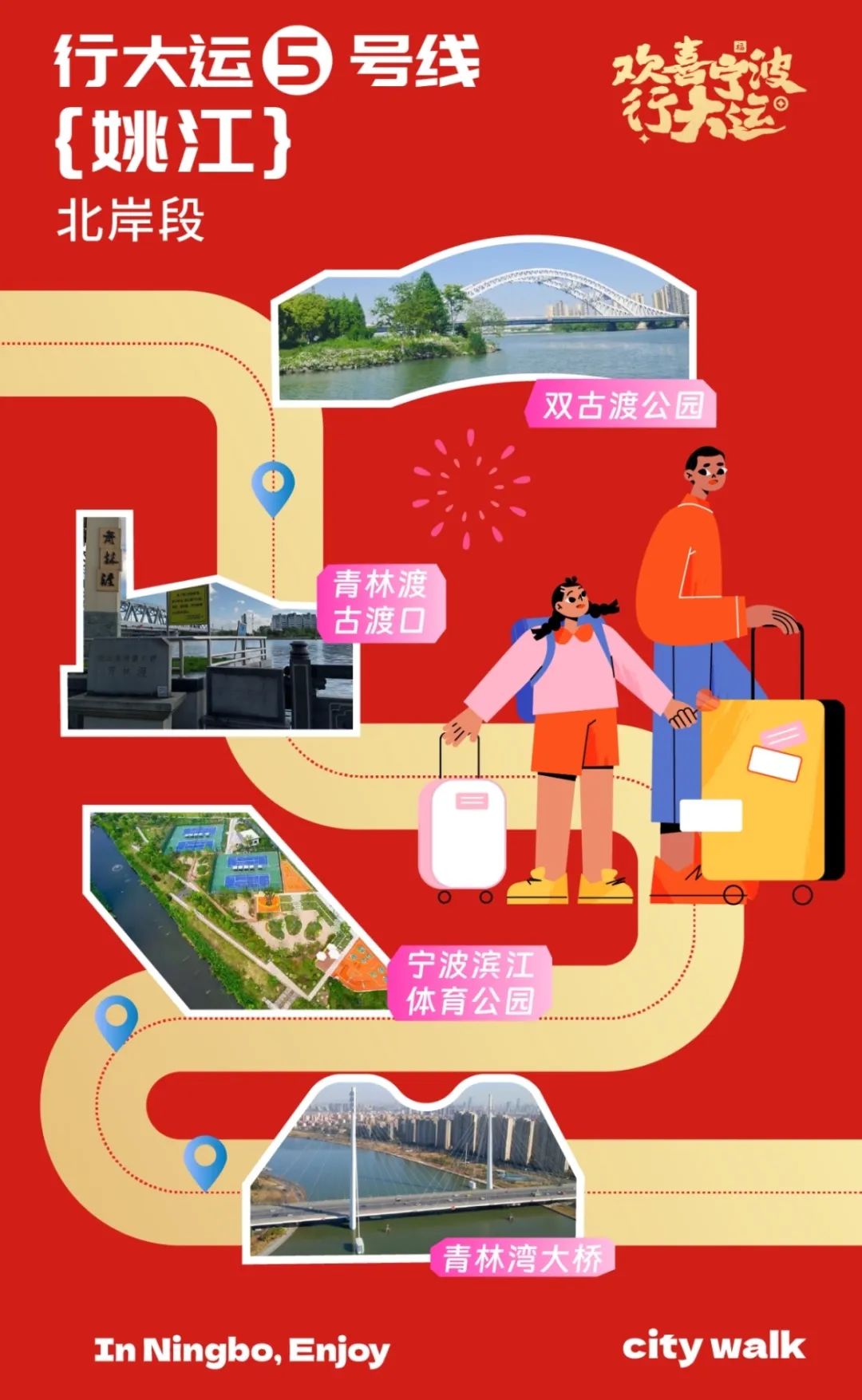
Lines 2 to 5 of the Fortune Route center around Sanjiangkou—the heart of Ningbo, where the Yao River and Fenghua River merge to form the Yong River before it flows into the sea.
Since the Tang Dynasty, Sanjiangkou has been a bustling international port. In the age of sailing ships, large sea vessels entered through Zhenhai Port, travelled up the Yong River to Sanjiangkou, where they either docked for trade or transferred cargo to inland boats bound for the canal and the interior regions.
The Old Bund on the north bank of Sanjiangkou was one of the first treaty ports opened to foreign trade, 20 years earlier than Shanghai’s Bund.
Today, the Old Bund preserves its historical architecture and urban charm while blending in modern urban culture, creating a dynamic interplay between legacy and progress.
Fortune Route Line 6
West Bank of Guanshan River: Yao River Greenway – Xiaoxiba Ruins – Guanshan River Greenway – Cicheng New Town
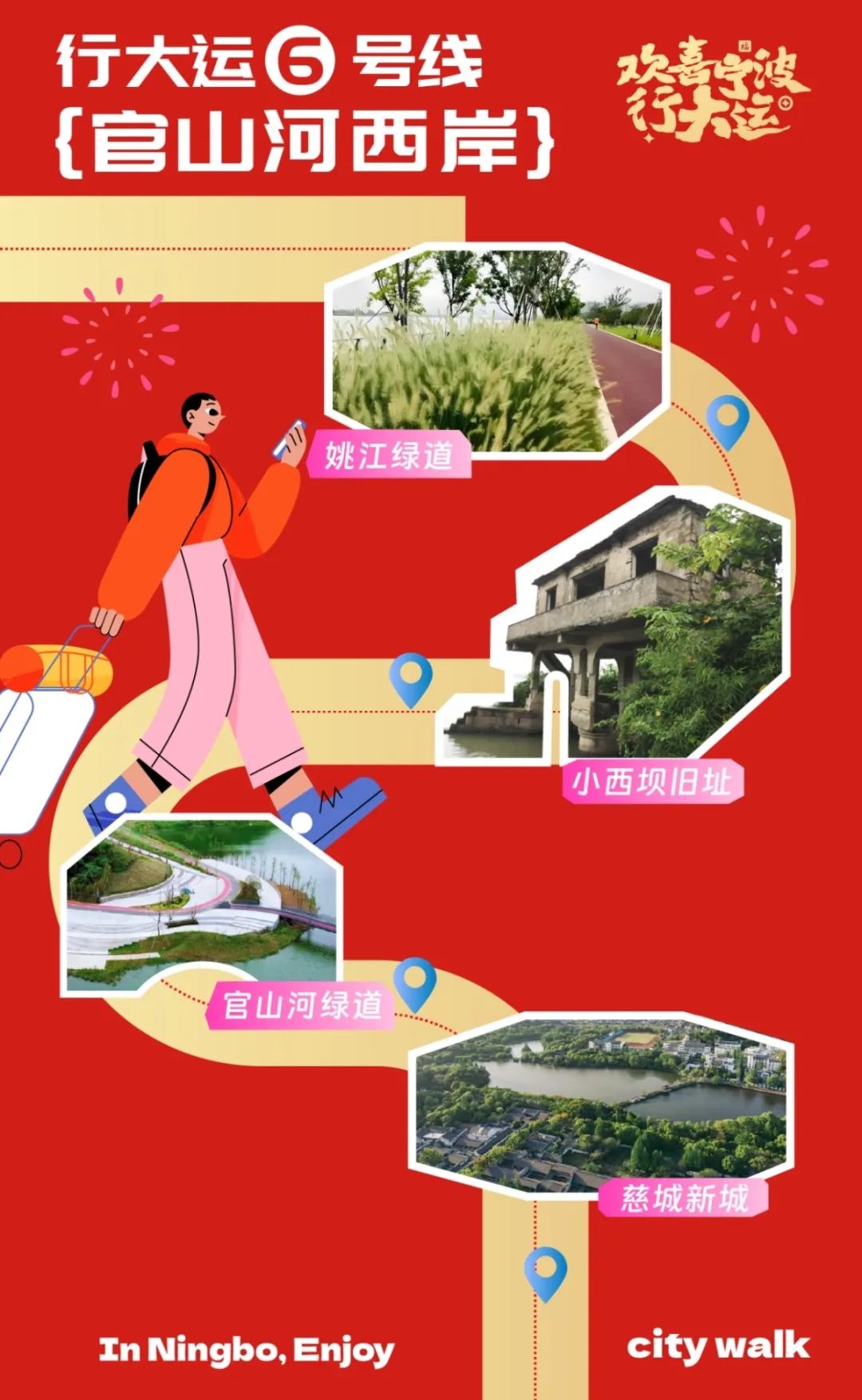
Also known as Shazigang or Shazipu, the Guanshan River extends about 4 kilometers from Jiantian Bridge outside the east gate of Cicheng to Xiaoxiba in the south.
In 2014, the Ningbo section of the Eastern Zhejiang Canal, including the Guanshan River, was inscribed as a UNESCO World Cultural Heritage site.
This man-made canal connects the Cijiang and Yao Rivers, and is a testament to the historical presence of the Guanshan administration in Cicheng. It was expanded and dredged under the supervision of the Southern Song official Wu Qian.
A dam named Xiaoxiba was built at its southern end, linking with Daxiba across the river in Yin County. Ships towed over the dam could enter the Xitang River and directly reach the prefectural city of Ningbo.
Both Choe Bu of Goryeo and Japanese monk Sakugen Shūryō landed in Eastern Zhejiang and entered Ningbo via this canal, continuing to the capital via the Grand Canal.
Fortune Route Line 7
Both Banks of the Cijiang River: Cijiang Sluice – Taiping Bridge
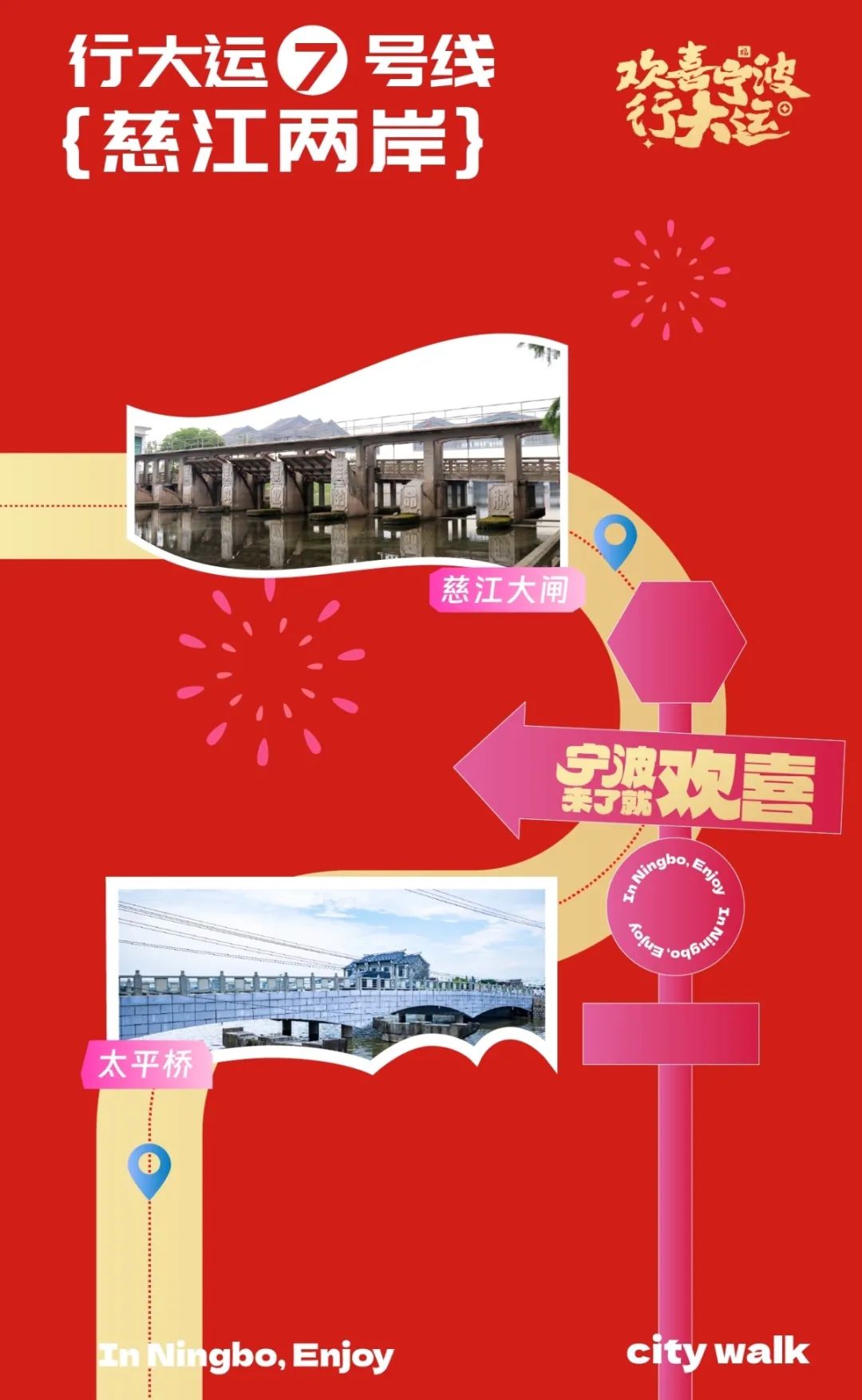
The Cijiang River runs approximately 18 kilometres from Sanjiangkou in Zhangting to Jiantian Bridge, passing landmarks such as the Cijiang Sluice and Taiping Bridge.
In 2014, it was also recognised as part of the UNESCO-listed Ningbo section of the Eastern Zhejiang Canal.
To mitigate the effects of tidal currents, Wu Qian in the Southern Song Dynasty dredged and modified the natural waterway to form the present river channel.
This created a safer maritime exit route for vessels from Shaoxing and Yuyao, allowing them to bypass the tidal Yao and Yong Rivers and reach the sea through Cijiang instead.
Source: Ningbo Evening News
Editor: Ye Ke
